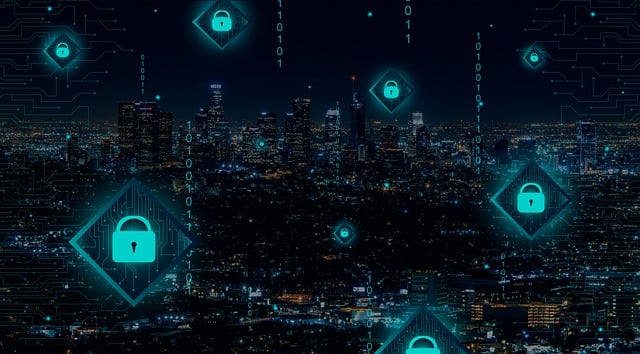
In today’s rapidly evolving digital age, the importance of cybersecurity cannot be overstated. With the increasing reliance on technology for both personal and professional activities, protecting sensitive information has become paramount. Data breaches, hacking attempts, and cyber threats are more common than ever, and individuals, businesses, and governments are all vulnerable to these risks. Understanding the fundamentals of cybersecurity and implementing robust strategies can significantly reduce the chances of falling victim to cyber-attacks. This article delves into the basic concepts of cybersecurity and provides detailed advice on how to protect your data from malicious threats.
What is Cybersecurity?
Cybersecurity refers to the practices, processes, and technologies used to protect systems, networks, and data from unauthorized access, theft, and damage. It involves a wide range of techniques aimed at safeguarding digital assets, including encryption, firewalls, antivirus software, and regular system updates. The ultimate goal of cybersecurity is to ensure the confidentiality, integrity, and availability of data, often referred to as the CIA triad. These three principles form the backbone of cybersecurity efforts:
- Confidentiality: Ensuring that only authorized users have access to sensitive data.
- Integrity: Maintaining the accuracy and trustworthiness of data by preventing unauthorized alterations.
- Availability: Ensuring that data and systems are accessible to authorized users when needed.
In the face of ever-evolving threats, understanding these core concepts is essential for individuals and organizations looking to defend against cyber-attacks.
Common Cyber Threats
To effectively protect data, it is crucial to recognize the types of cyber threats that exist. Cybercriminals use various techniques to exploit vulnerabilities in systems, and the following are some of the most common threats faced today:
1. Phishing Attacks
Phishing is a form of social engineering where attackers attempt to trick users into divulging sensitive information, such as passwords or credit card details. Phishing attacks often come in the form of fraudulent emails or messages that appear to be from reputable sources. Clicking on a malicious link in a phishing email can lead to stolen information or the installation of malware on the user’s device.
2. Malware
Malware is any software designed to harm, exploit, or disable computer systems. It includes viruses, worms, Trojans, and ransomware. Once installed on a device, malware can corrupt files, steal data, or give attackers remote control over the infected system. Ransomware, in particular, encrypts a user’s files and demands a ransom in exchange for their release.
3. Man-in-the-Middle (MitM) Attacks
In a MitM attack, cybercriminals intercept and manipulate communication between two parties. This type of attack typically occurs on unsecured networks, where attackers can eavesdrop on or alter the data being transmitted. For example, when logging into an online banking account on a public Wi-Fi network, an attacker could intercept your credentials and gain access to your account.
4. Distributed Denial-of-Service (DDoS) Attacks
DDoS attacks overwhelm a system or network by flooding it with traffic, rendering it unavailable to legitimate users. This can cause significant downtime for businesses, leading to financial loss and damaged reputations. In a DDoS attack, multiple compromised devices (often part of a botnet) are used to bombard a target with requests, overwhelming the system.
5. Password Attacks
Hackers often use brute-force techniques to guess passwords or exploit weak password practices to gain unauthorized access to accounts. Once inside, they can steal personal information, financial data, or intellectual property. Weak passwords and password reuse across multiple accounts are common security flaws that attackers exploit.
Key Cybersecurity Practices for Data Protection
To defend against these and other cyber threats, it is essential to adopt a range of cybersecurity practices. While no system is entirely immune to attack, the following measures can significantly enhance your data protection efforts.
1. Strong Password Management
Passwords are the first line of defense for protecting accounts and data. Creating strong, unique passwords for each account is one of the simplest yet most effective ways to prevent unauthorized access. Consider using a combination of letters, numbers, and special characters to create a strong password. Avoid using easily guessable information like birthdays or common phrases.
Moreover, using a password manager can help you generate and store complex passwords securely. It’s also essential to enable multi-factor authentication (MFA) wherever possible. MFA adds an extra layer of protection by requiring users to provide two or more forms of identification before accessing an account.
2. Regular Software Updates
Outdated software often contains vulnerabilities that attackers can exploit. By regularly updating operating systems, applications, and security software, you can reduce the risk of cyber-attacks. Software updates often include patches that fix security loopholes, so it’s critical to install updates as soon as they become available.
Many companies also release firmware updates for devices like routers and smart home systems. Keeping these devices up to date helps ensure that they remain secure and less susceptible to attacks.
3. Use of Firewalls and Antivirus Software
Firewalls act as a barrier between your network and external threats, monitoring incoming and outgoing traffic and blocking suspicious activity. Implementing a firewall, whether software-based or hardware-based, can help protect your systems from unauthorized access.
Additionally, installing reliable antivirus and anti-malware software can detect and remove malicious software before it causes damage. These programs offer real-time protection by scanning for viruses, worms, and other malware, helping you safeguard your data from known threats.
4. Data Encryption
Encrypting sensitive data ensures that even if an unauthorized party gains access, they cannot read or use the information without the decryption key. Encryption converts data into a code, making it unreadable to anyone without the correct key or password.
Encryption is particularly important when transmitting data over the internet. Many online services, including email providers and cloud storage platforms, offer encryption options to protect your data both in transit and at rest. Be sure to enable encryption on your devices and use encrypted communication tools for sensitive exchanges.
5. Secure Backups
Regularly backing up your data is critical in case of a cyber-attack or data breach. In the event that your data is compromised or lost due to ransomware, having secure backups ensures that you can restore your information without paying a ransom.
Backups should be stored in multiple locations, including offline storage and cloud-based solutions. It’s also important to regularly test your backups to ensure they are functioning correctly and that your data can be restored if needed.
6. Secure Wi-Fi Networks
Your Wi-Fi network can be an easy entry point for attackers if it is not properly secured. Always use a strong password for your Wi-Fi connection and consider using encryption protocols like WPA3 to protect data transmitted over the network. Avoid using public Wi-Fi networks for sensitive transactions, such as online banking, as these networks are often unsecured and vulnerable to MitM attacks.
Using a Virtual Private Network (VPN) is another way to protect your internet connection, especially when using public Wi-Fi. A VPN encrypts your internet traffic, preventing hackers from intercepting your data.
The Human Element in Cybersecurity
While technological defenses are essential, human behavior plays a significant role in cybersecurity. Many cyber-attacks exploit human error, such as clicking on malicious links or failing to update software. For this reason, cybersecurity education and awareness are vital. Employees, individuals, and even families should be educated about recognizing phishing attempts, creating secure passwords, and following best practices when it comes to handling sensitive information.
1. Recognizing Social Engineering Tactics
Social engineering attacks, like phishing, rely on manipulating human behavior rather than exploiting technical vulnerabilities. These attacks often appear in the form of urgent requests, fake warnings, or too-good-to-be-true offers. Knowing how to recognize and respond to these tactics can prevent significant data breaches.
2. Cybersecurity Training
For businesses, investing in cybersecurity training for employees is one of the best ways to strengthen the organization’s overall security posture. Regular training sessions can help employees identify and respond to cyber threats, reducing the likelihood of falling victim to an attack. Training should cover password management, recognizing phishing attempts, and reporting suspicious activity.
3. Implementing Access Controls
Limiting access to sensitive information is another effective way to enhance security. By implementing role-based access controls (RBAC), organizations can ensure that only authorized individuals have access to specific data or systems. This minimizes the risk of insider threats and reduces the likelihood of data leaks.




